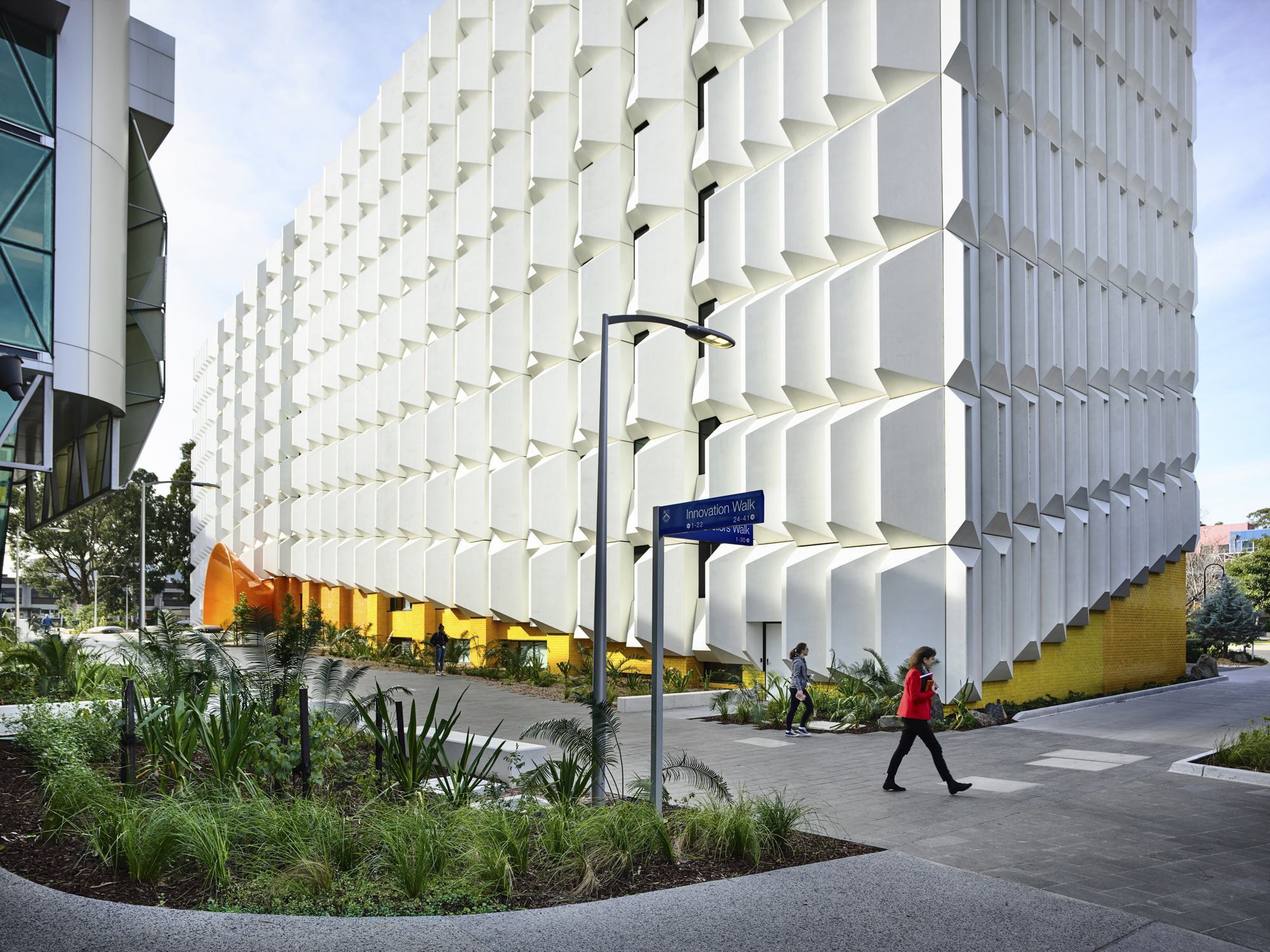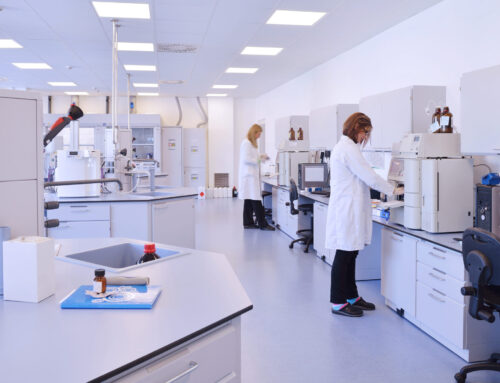Originally designed by Stephenson & Turner in 1968, the School of Biological Sciences ‘Building 17’ (now known as 18 Innovation Walk) contains teaching, laboratory and office spaces. While structurally sound, the buildings external facade was starting to fall into disrepair. There was also a need to improve the thermal efficiency of the existing facade as well as to future-proof the engineering services to allow flexibility for internal fitouts.
NDY designed services to integrate with the new facade, which essentially provided a new outer ‘skin’ for the building. The refurbishment was unique, with the brickwork and windows remaining in place during construction, whilst new glazing and lightweight concrete facade panels were installed around the building before the existing windows were removed. Remarkably, this process was completed whilst the building was still occupied.
Retaining the internal structure including existing plumbing, the new services were installed on the exterior so as not to disturb occupants and disrupt the inner workings of the building. Working within the parameters of the protruding glass reinforced concrete (GRC) panels making up the facade (up to 700 millimetres in dimension) allowed services to be concealed rather than trying to hide them in internal walls and ceilings.
The new infrastructure was designed in a way that allows flexibility for the internal spaces to be re-configured in the future to suit a variety of uses including laboratories. The robust services work behind the scenes complements the new facade, which enables a shading solution, the retention of thermal mass and limited building waste.
In working on an aging building, the NDY team carried out a thorough investigation to understand the building and its operational needs, and what new services were required in order to realise its full potential. The design further considered how works would be implemented to minimise disruption to occupants throughout construction.
The striking new skin and infrastructure delivers a modern, functional and aesthetically pleasing upgrade to the new 18 Innovation Walk that will raise the bar for the university’s biological sciences offering and act as a drawcard for potential STEM students considering Monash as their path to the future.
The project recieved a Commendation for Educational Architecture, AIA Victorian Chapter 2018
Project Details
Market Sector:
Education
Client: Monash University
Architect: Kosloff Architecture, Callum Morton and MAP (Monash Art Projects)
Value: $32 m
Completion: 2017












